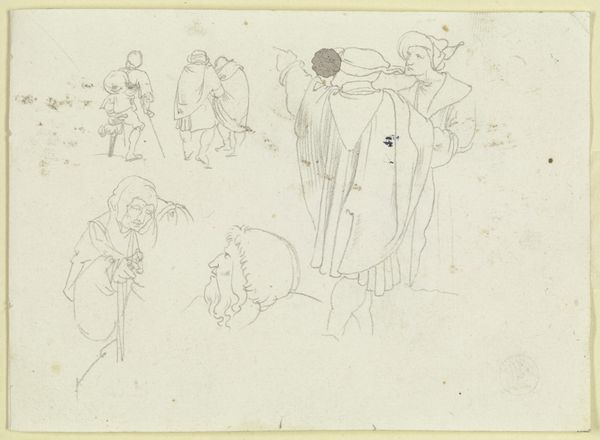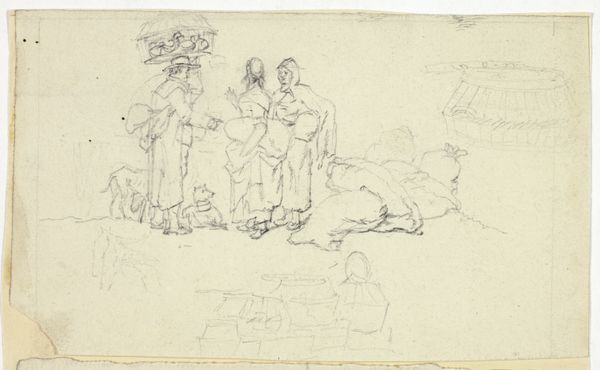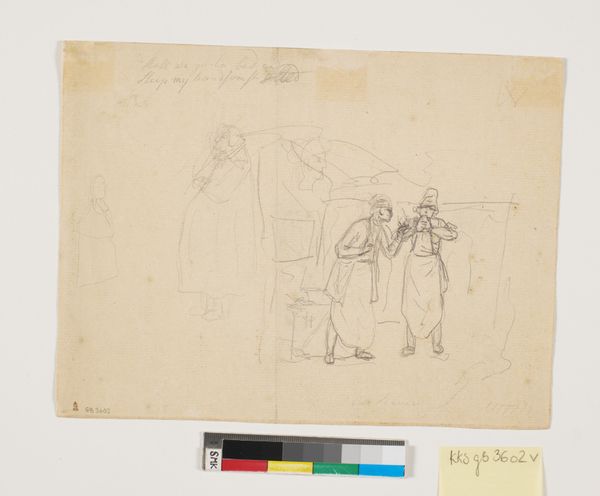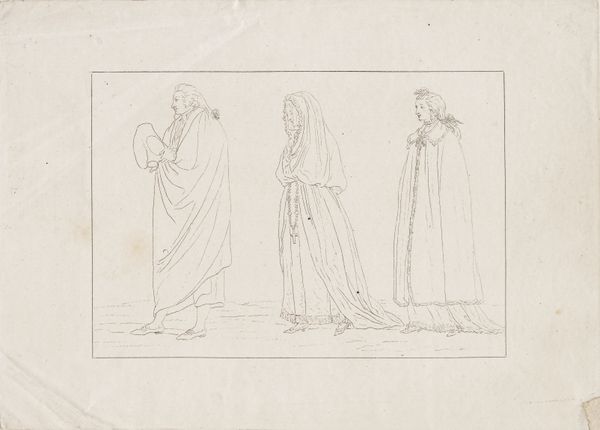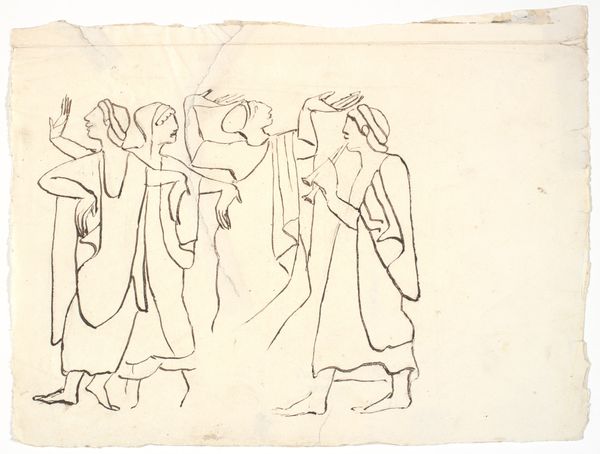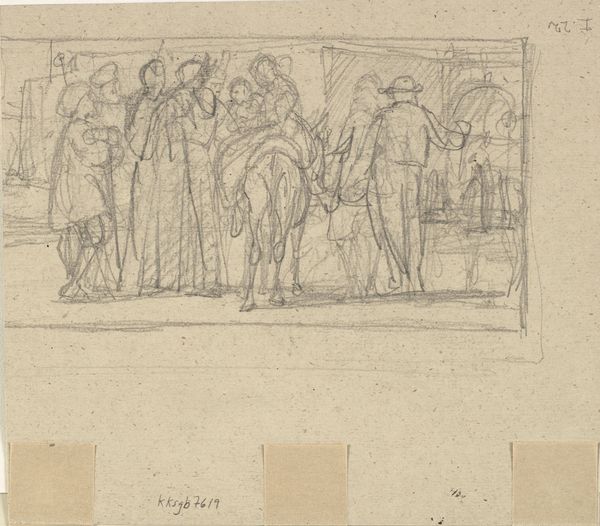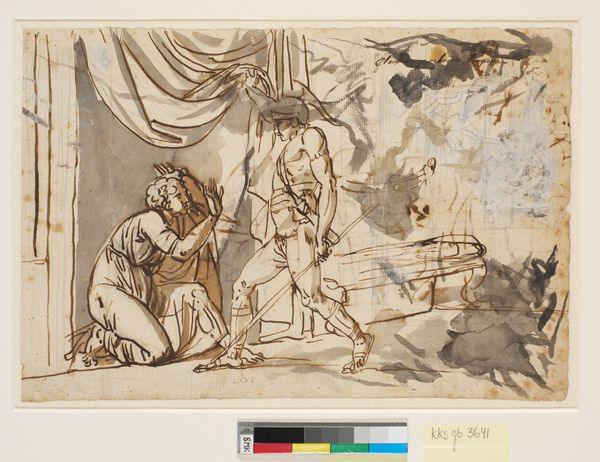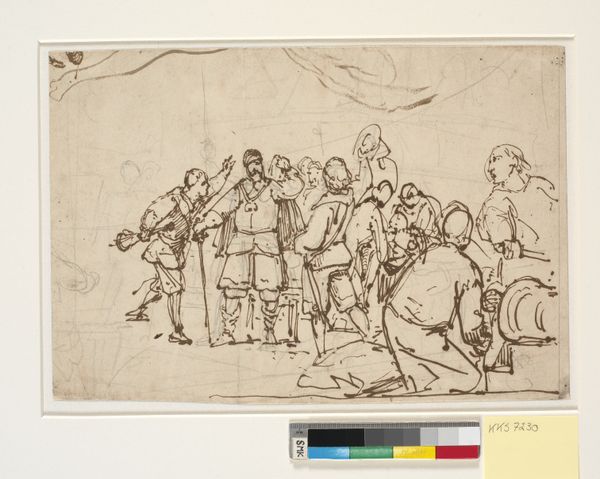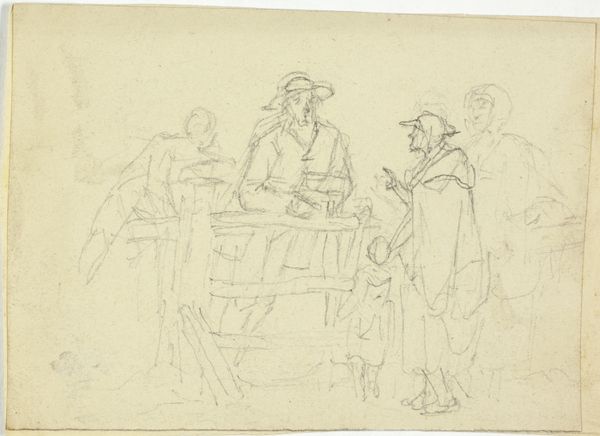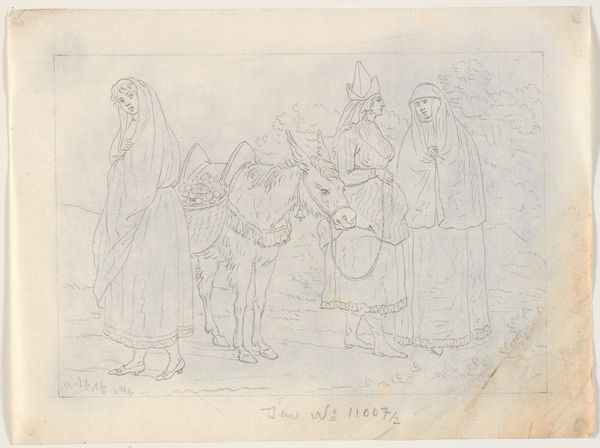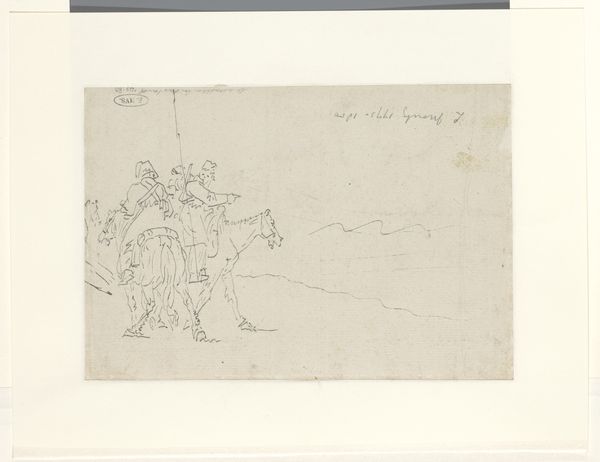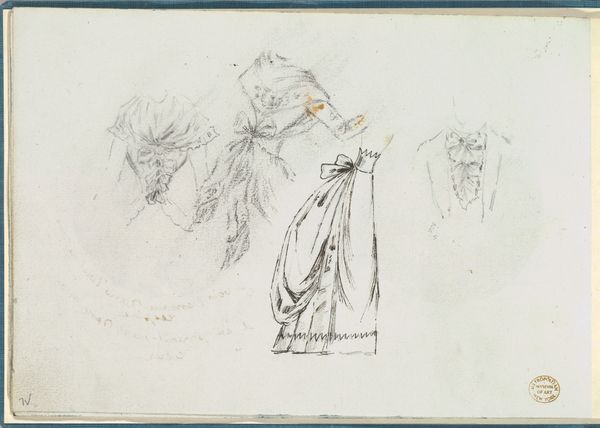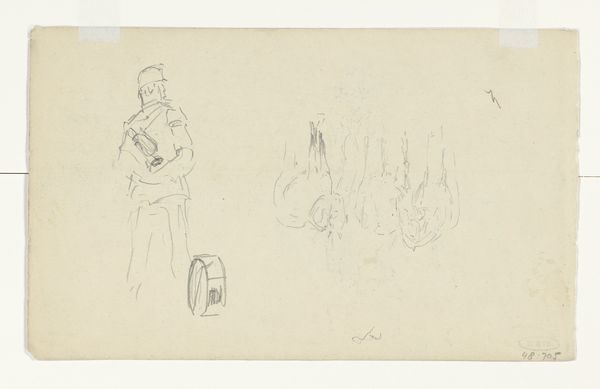
drawing, ink
#
drawing
#
neoclacissism
#
narrative-art
#
figuration
#
ink
#
ancient-mediterranean
#
history-painting
Dimensions: 193 mm (height) x 255 mm (width) (bladmaal)
Editor: So, this is "Minerva, Ulysses, and Euryale," a drawing from the 1800s by Nicolai Abildgaard, rendered in ink. It feels very sparse and linear to me, like a quick sketch, but with grand, neoclassical aspirations. What jumps out at you when you see it? Curator: The rapid, almost frantic lines speak volumes about the means of production here. This wasn't meant as a polished, finished piece, but more as a working drawing. Consider the cost and accessibility of materials at the time; ink was relatively inexpensive and quick to use. Editor: Right, it’s practical. I see that. Curator: And what's interesting is how Abildgaard is deploying it, what social message does this medium send in comparison to a finished oil painting? Was this piece maybe a commodity? To whom? What about its relationship to the patronage system of the day? These drawings became pedagogical tools in art academies of the 19th Century. The drawing itself then has labor ingrained into the marks it has created. How might a drawing's relative accessibility impact its reception by different social classes? Editor: So, its accessibility allows a different kind of engagement than, say, a large-scale history painting in oil might afford? It's interesting to consider how the material impacts how and for whom art is made. Curator: Precisely. Look also at the paper. It has age, it wears the history of its use, its own history and use value as it turns into both labor and product, process and intention. We see that it has served multiple masters in use for something grander. Editor: That really changes how I see the piece. It becomes less about the grand narrative and more about the everyday labor that goes into art-making. Curator: Exactly, shifting the focus from high art to the material and labor behind its production allows us a deeper understanding of its social context. Editor: It's fascinating how analyzing the materials can reveal so much about the context. Thanks!
Comments
No comments
Be the first to comment and join the conversation on the ultimate creative platform.
